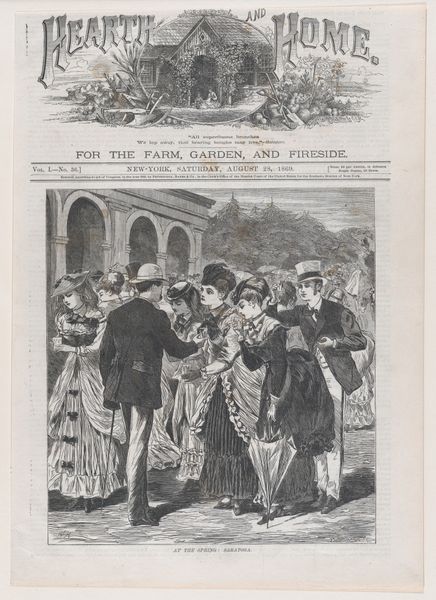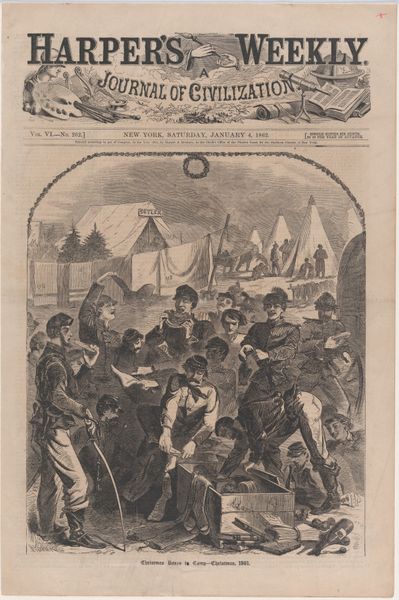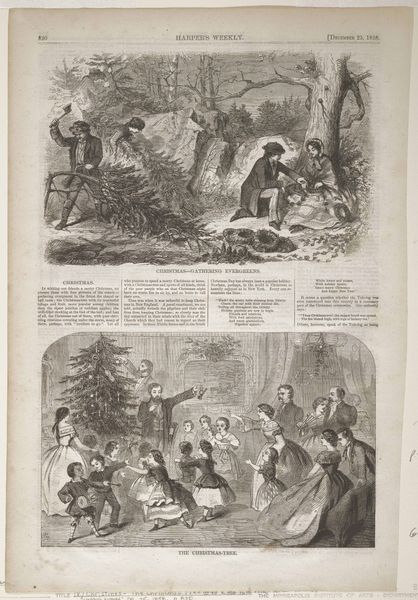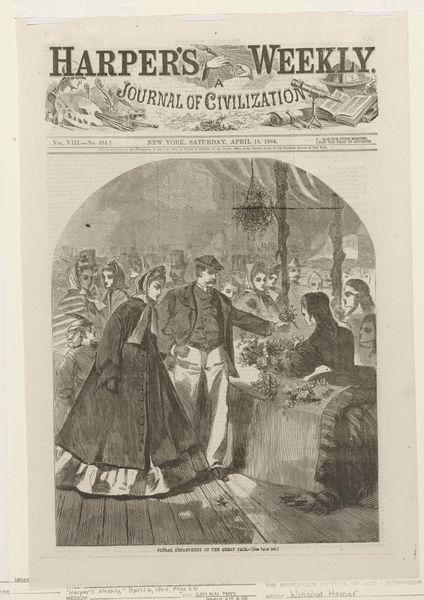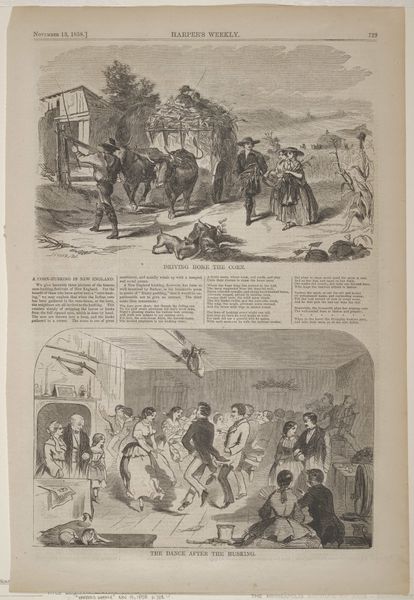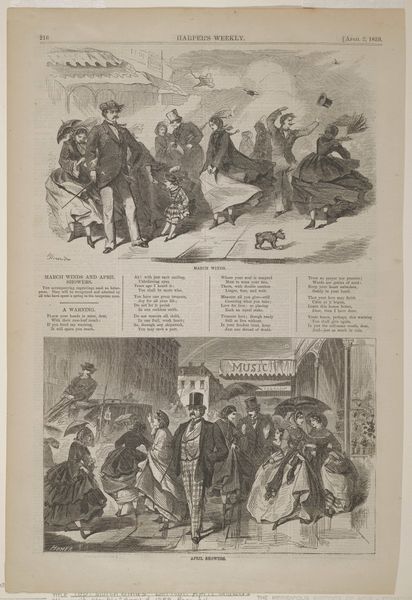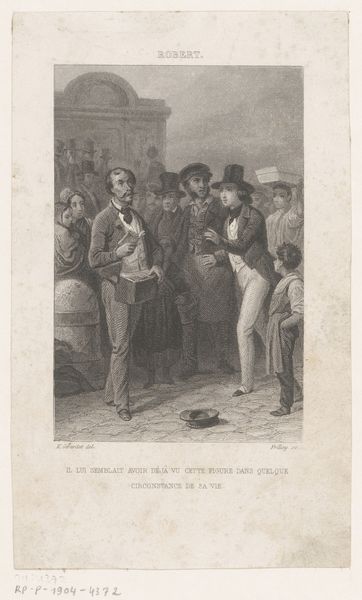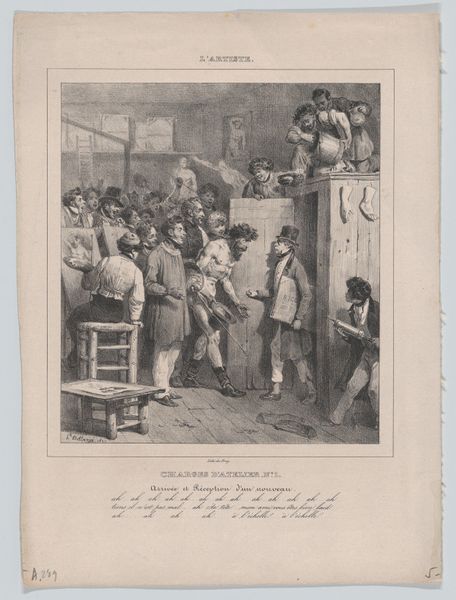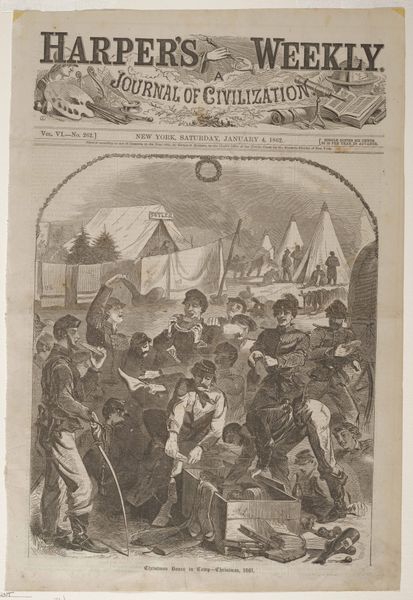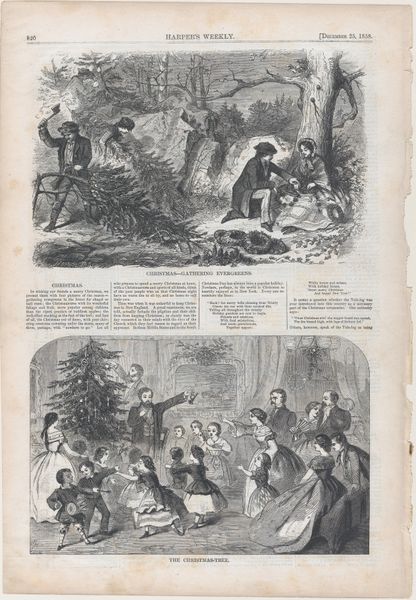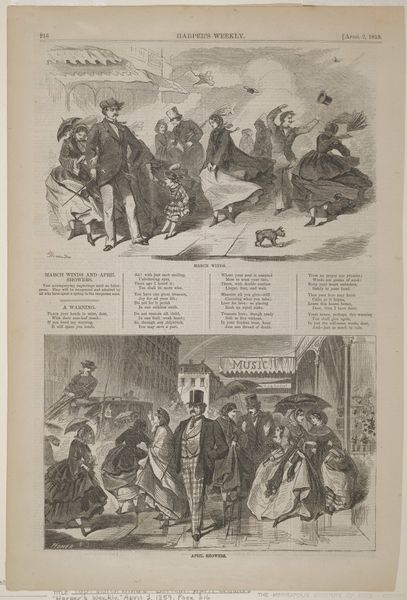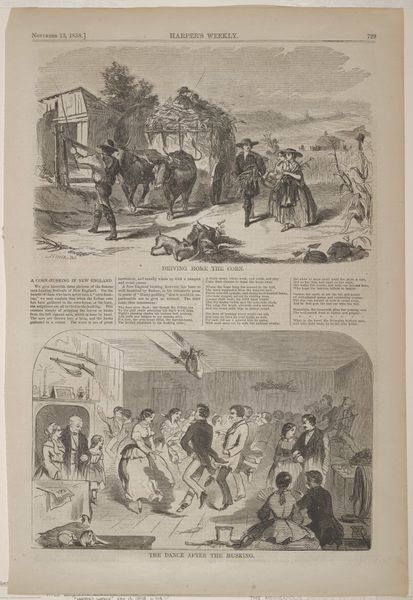
Floral Department of the Great Fair (from "Harper's Weekly," Vol. VIII) 1864
0:00
0:00
Dimensions: sheet: 15 15/16 x 10 13/16 in. (40.5 x 27.5 cm)
Copyright: Public Domain
Curator: Here we have Winslow Homer's "Floral Department of the Great Fair" from 1864, originally published in Harper's Weekly. It’s a wood engraving, a medium quite common for mass dissemination at the time. Editor: It's a remarkably detailed print. Despite being monochrome, the artist managed to convey a sense of bustling energy, a real slice of life from the era. I am impressed by the modulation of dark and light that create a complex overall composition. Curator: Indeed. Look at the way Homer uses hatching and cross-hatching to create depth and texture, simulating the look and feel of fabrics and forms with precision. The architectural arch draws your eyes into a space filled with individuals. Editor: I find it particularly interesting how this print functioned within Harper's Weekly. It suggests that the act of depicting these fairs wasn't merely about documenting an event, but about a cultural engagement of representing consumption. These floral displays represent an availability that perhaps stood in contrast to the civil unrest, and so this sort of idealized depiction has interesting social implications. Curator: A keen observation. This fair becomes a curated space of national pride and economic strength even amid conflict. The detailed rendering reinforces its supposed authenticity. Notice, too, the faces of the individuals, captured with particular care as opposed to a less formal magazine. This gives even more credence to what they might have meant to Harper's Weekly. Editor: One could see this piece, therefore, as less a depiction of everyday life, and more as an effort of American print culture as a manufacturer of patriotism during wartime. Flowers here operate as objects in commerce but stand symbolically as a cultural force, printed, reproduced, and distributed throughout the American Northeast. The print making process further amplifies this cultural implication as the artist himself likely participated in its production. Curator: A compelling consideration of material conditions. In this light, the artistic structure itself contributes to the narrative, providing the viewer not just a snapshot of the era, but a reflection on its social fabric. Editor: Indeed.
Comments
No comments
Be the first to comment and join the conversation on the ultimate creative platform.
